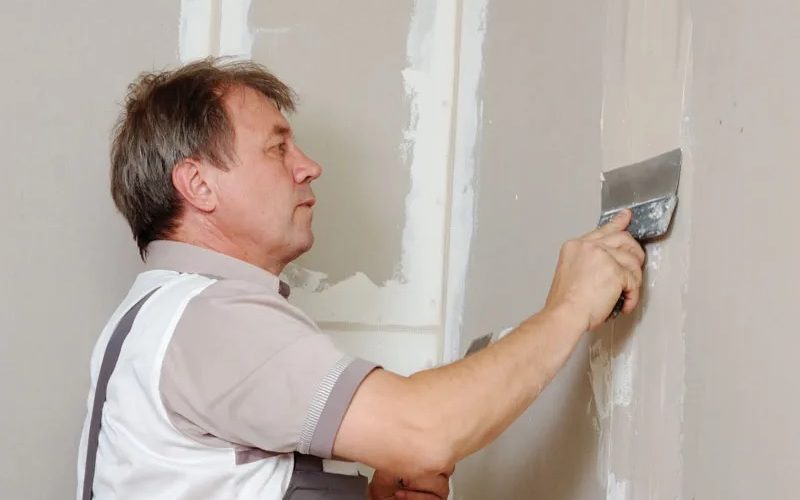5 Drywall Repair Tips That Will Save You Time and Money
Drywall is an essential part of any home. It is vital in providing shelter, soundproofing, and insulation. However, drywall is vulnerable to damage caused by water damage, vandalism, temperature changes, pets, and animals. But worry not! Here are some repair tips that will ensure your damaged drywall gets the necessary attention it needs.
How is drywall damaged?
Drywall is a building material primarily used for interior wall construction. When drywall is damaged, it can become unstable and prone to collapse, which can lead to costly repairs and eventual damage. Due to its flammability and durability, it’s often the target of graffiti and fires. Drywall repair involves patching the damaged area with a fresh coat of drywall compound or plaster.
Another common cause of drywall damage is water intrusion, whether from leakage or sprinkler irrigation. Water damage can change the surface texture of drywall, causing it to buckle and crack. Additionally, drywall can be damaged by construction debris or nails.
To repair drywall the right way, follow these repair tips to get the best results from your drywall repairs. The tips include using a framing square to ensure even edges as well as using a t-square to ensure straight lines in the repair layout. These simple steps will help you save time and money on drywall repairs.
Causes of drywall damage
If you’ve experienced drywall damage, it’s likely due to one of the following causes: water damage, moisture damage, dust or chemical damage, or heat damage.
Water damage occurs when water gets into the drywall, causing swelling and distortion. As a result, the drywall may crack and peel away from the framing.
Moisture damage occurs when there is excess moisture in the environment, such as from broken pipes or flooding. This can cause the drywall to swell and buckle. The excess moisture may also cause mold or decay to develop on the drywall.
Dust can be a problem for any type of construction, but it is particularly harmful for drywall because it can cause swelling and distortion.
Chemicals such as pollutants used in construction can also cause drywall damage. This happens when those chemicals get trapped in the drywall, causing swelling and distortion. The chemicals may also harm the finish on the drywall, causing discoloration and injury to underlying materials. Finally, exposure to high temperatures can cause drywall to expand and buckle.
How to fix drywall damage
When it comes to repairing drywall damage, it’s vital to check for moisture build-ovr and remove any sources of water from the area. This will prevent further damage to the drywall and its attached plastering.
If you do find moisture on the wall, patching cracks and holes is an effective way to restore the drywall’s appearance and functionality. To do this, use a compound that is specifically designed for repairing drywall damage. This will fill in cracks and holes quickly and easily, sealing them with a finish of your choice. If the drywall has been damaged too extensively, you can consider replacing the entire section of drywall. However, be sure to consult a competent professional before proceeding with this step. After repairing drywall damage, be sure to sand and refinish the area to restore its original appearance and color. You can choose one of two options – painting or wallpaper – to enhance the look of your renovation.
Different types of repair compounds and methods
Drywall repair can be time-consuming and messy. Different types of repair compound and methods are available to make the job easier and more cost-effective.
When repairing small holes, cracks, or tears in drywall, a drywall repair compound is a good option. This compound is used to fill small holes in the drywall and provides a smooth finish. It’s easy to apply and lasts well without fading or rotting. It can be easily dried and sanded so it doesn’t leave behind residue when it dries.
A patch is a piece of drywall that is cut to fit and then glued to the wall. It’s an economical way to repair small holes in drywall without the need for special tools or skills.
If you’re repairing a large hole, patching is the best option for durability and cost-effectiveness.
Batches are sheets of gypsum board covered with drywall and held in place with either joint compound or screws. They provide a smooth, solid finish that stays intact while providing easy access for repairs or modifications.
Taping is another handy tool that’s used to hold sections of drywall together while they are repaired or replaced. It works well as a temporary measure until the job can be completed with drywall patching compounds and other repair methods.
Gluing patches, batts, or pieces of drywall together with glue is another great option for repairing small holes or cracks in drywall quickly and easily.
What are some tips for preparing the drywall surface before fixing it?
Before you start fixing the drywall, it’s important to prepare the surface first. Here are some tips to follow:
- Use a vacuum cleaner to remove any dust or debris.
- Apply a coat of primer to the drywall surface.
- Apply a layer of drywall joint compound to the primed surface.
- Smooth the compound with a roller, then use a trowel to finish the job.
- Allow the compound to dry before painting or staining.
What are some steps that I should take after repairing drywall damage?
After repairing drywall damage, you should take the following steps to ensure a successful repair:
- Check the wall for any signs of water damage. If there is any evidence of water damage, patch it up as best as you can before proceeding with the repair.
- Remove any damaged drywall with a trowel. Use a level to make sure that the repair is level and correct.
- Apply a layer of joint compound to the entire surface of the drywall. Use a professional contractor’s trowel to apply the compound evenly and smoothly.
- Finish the repair by applying a second layer of joint compound and sanding it smooth.
What are some common drywall repairs that homeowners may encounter?
When it comes to repairing drywall, there are a few common repairs that homeowners may encounter. Here are 5 tips to help you repair drywall correctly:
1) Use a level when marking the wall: Making sure your repair is straight is key to avoiding future problems.
2) Use a straight edge to ensure that the repaired area is straight: Using a straight edge helps avoid any bumps or distortion in the finished product.
3) Use a trowel to make deep cuts: Make sure to use a trowel so that the repair area is smooth and uniform.
4) Use joint compound to fill in any cracks or gaps: Joint compound is a great adhesive for filling in gaps and cracks.
5) Use a sandpaper block to smooth the compound before painting: Sanding the joint compound before painting helps to reduce the chances of paint chipping or flaking off.
Why you should hire handyman for drywall repair?
If you’re in need of a drywall repairman, then you should consider hiring one.
Drywall repair is a common task that can be done by a handyman. Not only will this handyman be able to do the repairs quickly and professionally, but he may also have warranties or guarantees that cover his work. So make sure to ask about these details before hiring him.
You’ve just learned about the types of drywall damage and how to fix it. The next step is to choose a drywall repair compound that works well for you and follow the instructions on the packaging. Besides, use enough of the repair compound to cover the damaged area well. If you do this, you can save yourself from unnecessary stress and hassle. Keep reading for expert advice on how to fix an entryway or other rooms in your home if they are damaged by water.

